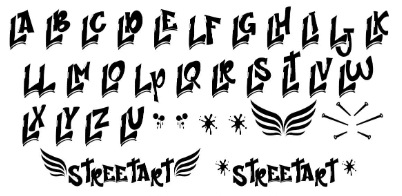Street Art:52iqerzlhiq= Graffiti Font

Street Art:52iqerzlhiq= Graffiti Font represents a significant intersection of urban culture and artistic expression, drawing upon the rich history of graffiti as a medium of defiance and identity. Its distinctive characteristics not only challenge conventional typography but also serve as a voice for marginalized communities, reflecting their narratives and struggles. The implications of this font extend beyond aesthetics, raising questions about its role in both art and society. What remains to be explored is how this visual language continues to evolve and influence contemporary cultural dialogues.
Origins of the Font
Although graffiti font emerged primarily from urban Street Art:52iqerzlhiq= Graffiti Font culture, its origins are deeply rooted in a confluence of artistic expression and social commentary.
Historical influences, including post-war artistic movements and the rise of hip-hop, catalyzed its design evolution.
This font transcends mere aesthetics, embodying a rebellious spirit that challenges societal norms and gives voice to marginalized communities, reflecting the desire for freedom and identity.
Read More Clip Art:4ebkvhbn_H0= Nurse
Key Characteristics
The evolution of Street Art:52iqerzlhiq= Graffiti Font has resulted in a distinctive set of characteristics that set it apart from traditional typography.
These fonts exhibit unique styles, often characterized by bold strokes, exaggerated curves, and dynamic forms.
Visual elements such as vibrant colors and layered textures further enhance their impact, creating a dialogue between the text and its urban environment, while embodying an ethos of freedom and self-expression.

Cultural Impact
Graffiti fonts have transcended their origins as mere urban expressions, evolving into potent symbols of cultural identity and social commentary.
They reflect the pulse of society, providing marginalized voices a platform to challenge norms and provoke dialogue. This art form captures the essence of rebellion and resilience, making it a vital medium through which communities articulate their struggles, dreams, and aspirations.
Usage in Street Art
As a dynamic extension of cultural expression, graffiti fonts play a pivotal role in the broader context of street art.
These fonts, rooted in diverse graffiti techniques, serve as visual language that amplifies urban expression. They not only convey messages but also reflect the ethos of freedom and rebellion inherent in street culture, transforming mundane spaces into vibrant canvases that resonate with the community’s voice.
Conclusion
In the vibrant landscape of urban expression, the Street Art:52iqerzlhiq= Graffiti Font serves as a brush wielded by the collective voice of the marginalized, painting narratives of resilience on the concrete canvas of society. Each stroke embodies defiance, each color radiates passion, transforming the mundane into a powerful testament of cultural identity. This font, much like the phoenix, rises from the ashes of oppression, illuminating the struggles and aspirations of communities, ultimately forging a profound connection between art and social consciousness.





